1) Dürnstein
Dürnstein is a small town on the Danube river in the Krems-Land district, in the Austrian state of Lower Austria. It is one of the most-visited tourist destinations in the Wachau region.
The town gained its name from the medieval Dürnstein castle. The castle’s name derived from the German duerr/dürr, meaning “dry”, and Stein, “stone”. It is famous for its blue tower, which is clearly visible from the river. The municipality consists of the Katastralgemeinden of Dürnstein, Oberloiben, and Unterloiben. The modern town stands between the castle and the river. In Dürnstein, the summers are comfortable, the winters are freezing and snowy, and it is a partly cloudy year round. The best time to visit Dürnstein is from mid-June to late August.
2) Graz
Graz is the second-largest city in Austria. It is situated on both sides of the Mur river in southeast Austria. Its historic center (Altstadt) is one of the best-preserved city centers in Central Europe.
The city’s historic center was added to the UNESCO list of World Heritage Sites in 1999. Graz was designated the Cultural Capital of Europe. In 2008, it became a City of Culinary Delights. The most important museums in Graz are Tramway Museum, Kunsthaus, and Landeszeughaus.
The Herz-Jesu-Kirche is the largest church in Graz, Austria. The city hosts the annual festival of classical music ‘Styriarte’. In Graz, the summers are warm, the winters are freezing and snowy. The most important sights in the historic center are ‘Town Hall’, ‘The Castle Hill’, ‘The Clock Tower’, ‘The Armoury’, and ‘The Graz Opera House’.
3) Innsbruck
Innsbruck is the fifth-largest city in Austria. Innsbruck is an internationally renowned winter sports center. It hosted the 1964 and 1976 Winter Olympics as well as the 1984 and 1988 Winter Paralympics.
In 2012, it also hosted the first Winter Youth Olympics. The popular museums in Innsbruck are ‘Alpine Club Museum’, ‘Armoury’, ‘Tyrol Panorama Museum’, ‘Tyrolean Folk Art Museum’, and ‘Tyrolean Museum Railways’. The first official Austrian Chess Championship was held in Innsbruck.
Lots of tourist visit Churches like ‘Old Ursuline Church’, ‘Jesuit Church’, ‘Holy Trinity Church’, and ‘Pradler Parish Church’. The climate of Innsbruck is moderately continental, with cold winters and warm summers.
4) Salzkammergut
The Salzkammergut is a resort area in Austria, stretching from the city of Salzburg eastwards along the Alpine Foreland and the Northern Limestone Alps to the peaks of the Dachstein Mountains.
The main river of the region is the Traun. The lands on the shore of the Traun River comprise numerous glacial lakes and raised bogs, the Salzkammergut Mountains and the adjacent Dachstein Mountains, the Totes Gebirge and the Upper Austrian Prealps with prominent Mt. Traunstein in the east.
The towering mountain slopes are characterized by bright limestone (karst) and flysch rocks. UNESCO designated “Hallstatt–Dachstein/Salzkammergut Cultural Landscape a World Heritage Site. Here, the climate is cold and temperate. The rainfall in Salzkammergut is significant.
5) Vorarlberg
Vorarlberg is the westernmost state of Austria. The energy sector is one of the important factors in Vorarlberg’s economy.
Vorarlberg was the first region in Europe where more sustainable energy was produced than consumed. The greatest tourist attractions are the mountains and the numerous ski resorts. In the summer, mountain sports like hiking, mountain biking, climbing, and trail running play a big role in Vorarlberg’s tourism. The most visited museums in Vorarlberg are the Kunsthaus Bregenz, the Vorarlberg museum, and the Jewish Museum of Hohenems.
The White Ring holds the Guinness World Record for being the longest ski area in the world at 22 km. Vorarlberg is divided into four large districts Bregenz, Dornbirn, Feldkirch, and Bludenz from north to south. The Fachhochschule Vorarlberg is considered one of Austria’s best-applied universities in the field of technology.
6) Bad Gastein
Bad Gastein is a spa town in the district of St. Johann im Pongau, in the Austrian state of Salzburg.
It is located in the historic Pongau region, the municipal area of about 171 square kilometers (66 sq mi) is the largest in St. Johann im Pongau District. Its southern parts belong to the Hohe Tauern national park. Bad Gastein hosted the 1958 World Championships in alpine skiing.
Since 2007, the town also annually hosts the Gastein Ladies tennis tournament, an International event on the WTA Tour. The town center is located at Gastein Falls, about 1,000 meters (3,300 ft) above sea level. It is characterized by numerous historic multi-story hotel buildings erected on steep slopes. Due to the town’s high elevation, the Summers are mild, sometimes warm with cool, refreshing nights. Winters are moderately cold and snowy.
7) Hallstatt
Hallstatt is a small town in the district of Gmunden, in the Austrian state of Upper Austria. Tourism in Hallstatt began in the 19th century but greatly increased after it was named a UNESCO World Heritage Site in 1997.
The ice caves and salt caves with their impressive subterranean salt lake are also worth visiting and are truly spectacular. Because of its special historical evolution, this cultural landscape has retained a degree of authenticity in nature and society that is outstanding in the alpine region.
Lots of people visit the ‘Hallstatt Museum’ every year. The Hallstatt salt mine is the world’s oldest working salt mine. Hallstatt is also known as the “Pearl of Austria”. Lots of tourists love to do boating, hiking, and surfing. The Austrian Public Broadcasting Organization made multiple documentaries about the situation.
8) Gesäuse National Park
The Gesäuse National Park is a national park in the Austrian state of Styria. It is located in the mountainous Upper Styrian region. Gesäuse National Park is in the region of mountain ridges, deep valleys, and dense forests.
It is the perfect location for exploring. It covers large parts of the Gesäuse range within the Ennstal Alps and the steep water gap of the Enns river between Admont and Hieflau. The area also covers parts of the municipal areas of ‘Sankt Gallen’, ‘Johnsbach’, ‘Weng’, and ‘Landl’. The highest mountain is Hochtor at 2,369 meters (7,772 ft).
Gesäuse National Park is one of the most visited destinations in the world. There are great options for reaching the park by train on weekends and holidays. There is a direct route from Vienna to Gesäuse.
9) Saalbach-Hinterglemm
Saalbach-Hinterglemm is well known for its skiing and other winter sports. The town of Saalbach is primarily orientated toward tourism.
In 1991, the FIS Alpine World Ski Championships took place in Saalbach-Hinterglemm. Apart from that, it has been the venue for the British University Snowsports Championships (BUSC) and the British Royal Air Force Championships. Saalbach is one of Austria’s premier ski resorts, offering a wide range of runs, extensive off-piste, and an excellent snow record.
Saalbach Valley makes some absolutely breathtaking views at any time of day. It is one of the perfect places for exploring. Saalbach-Hinterglemm also features 6 and 8-man chairlifts with heated seats and retractable covers for use in bad weather. It has a temperate continental climate.
10) Hochosterwitz Castle
Hochosterwitz Castle is a castle in Austria, considered one of Austria’s most impressive medieval castles. Hochosterwitz is 664 meters (2,178 ft) above sea level on the rim of the historic Zollfeld plain north of Magdalensberg, about 7 km (4.3 mi) east of Sankt Veit.
It is considered one of the most impressive medieval castles in the world. Some parts of the castle are open to the public every year from Easter to the end of October. Tourists can walk along the 620-meter pathway through 14 intriguing fortified gates before they reach the stunning façade of the castle.
The castle rooms hold a collection of prehistoric artifacts, weapons, paintings, and armor, including one set of armor 2.4 meters (8 ft) tall. Hochosterwitz Castle can be reached by car from Klagenfurt.
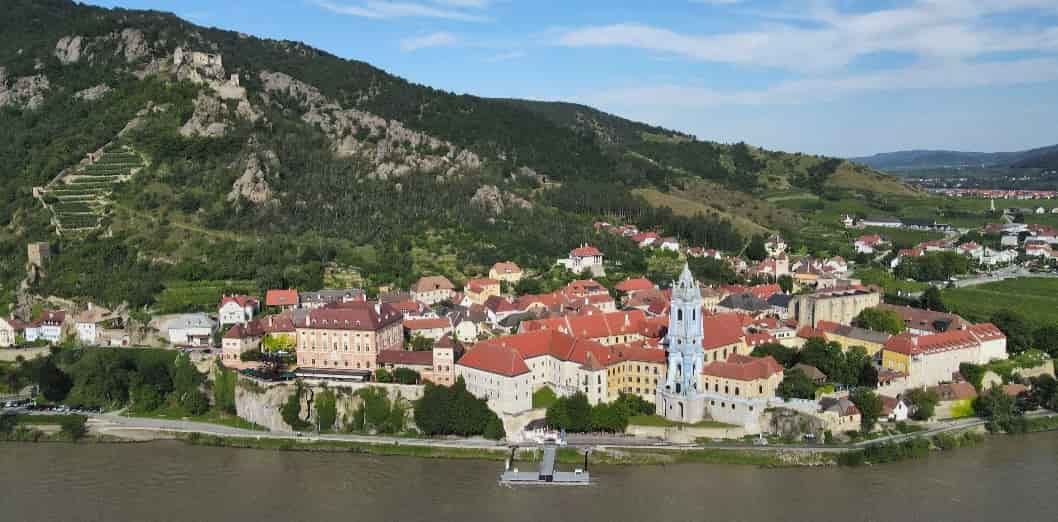
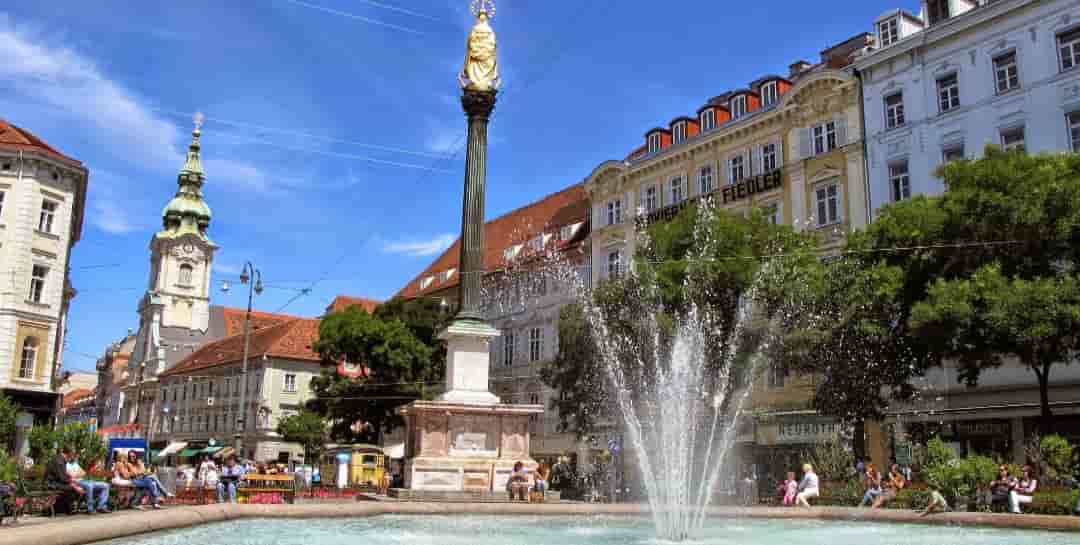
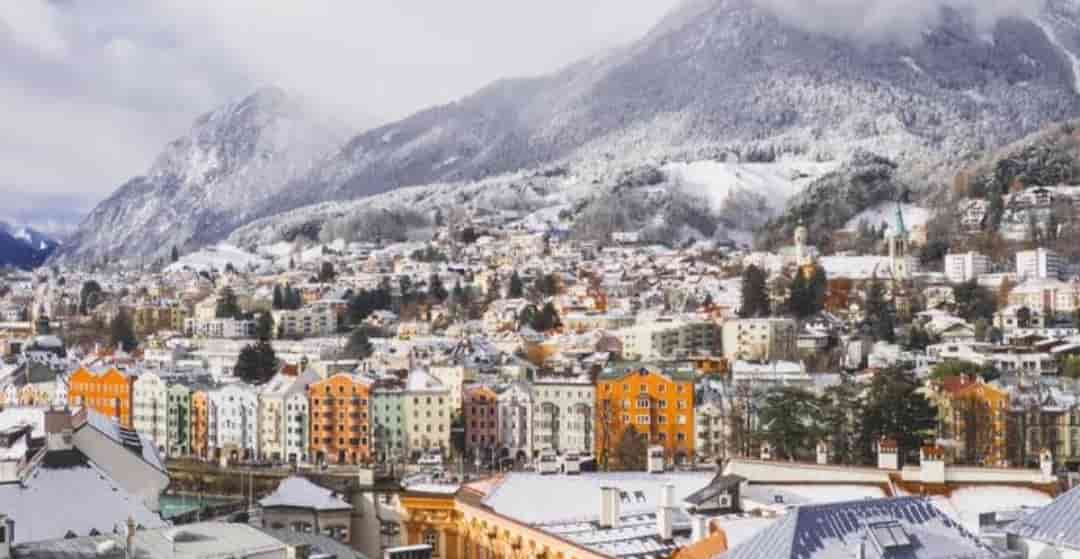
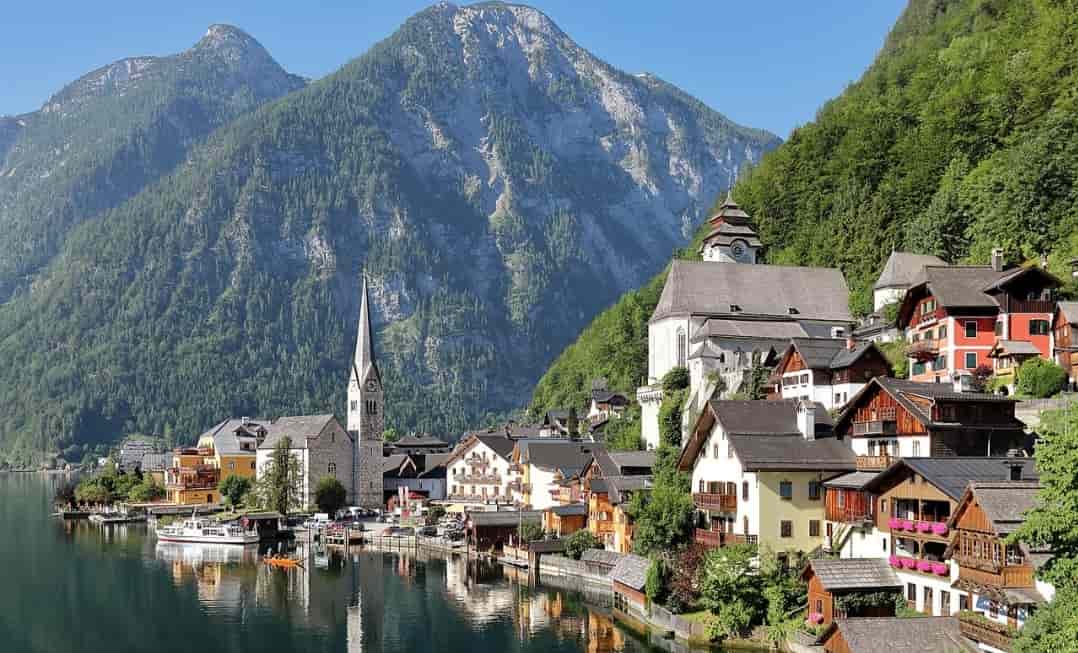
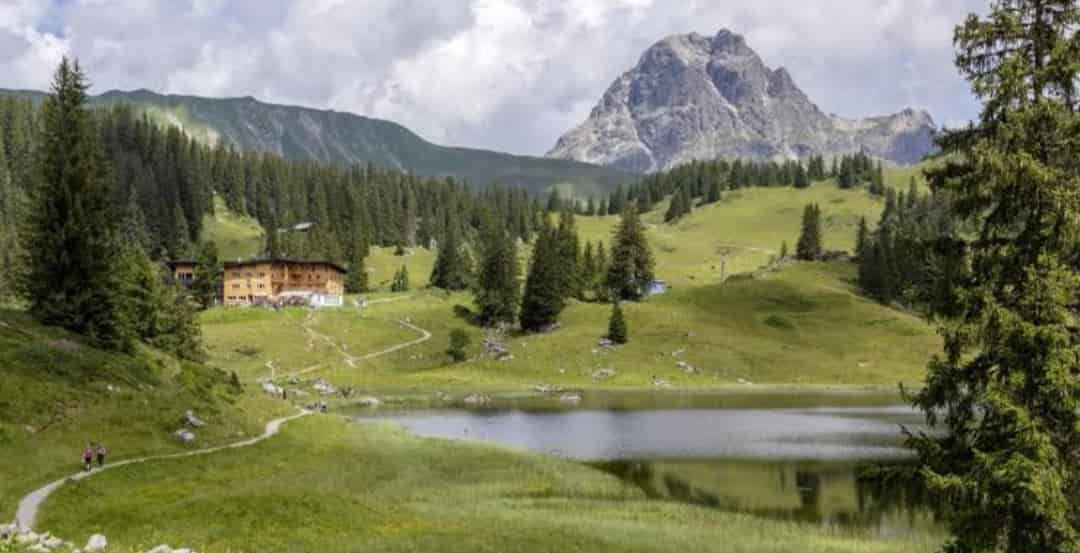
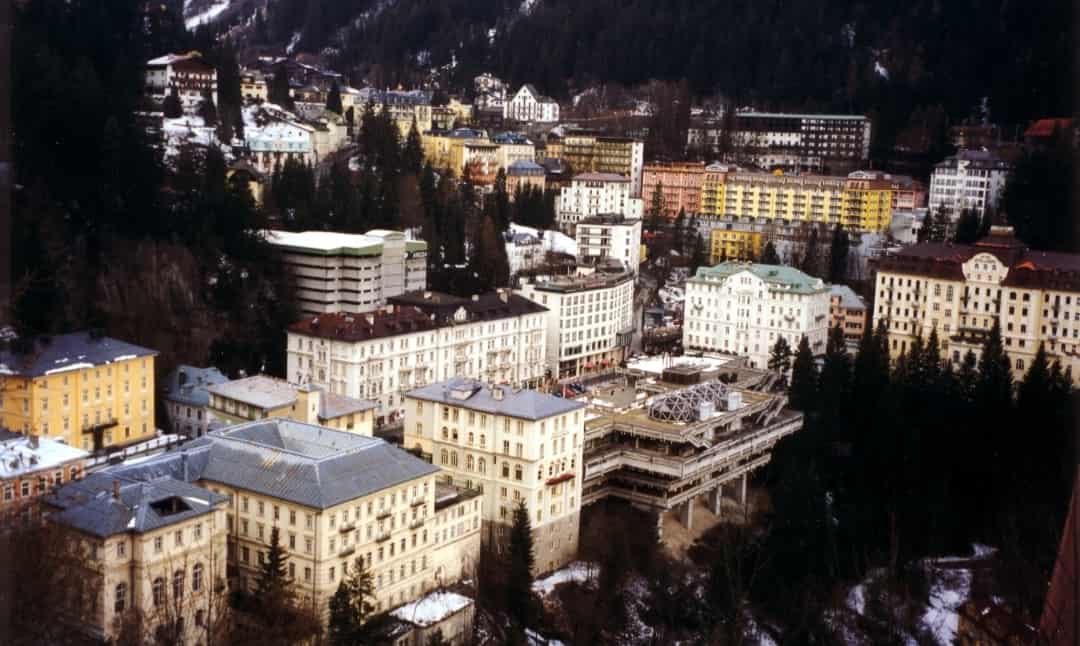
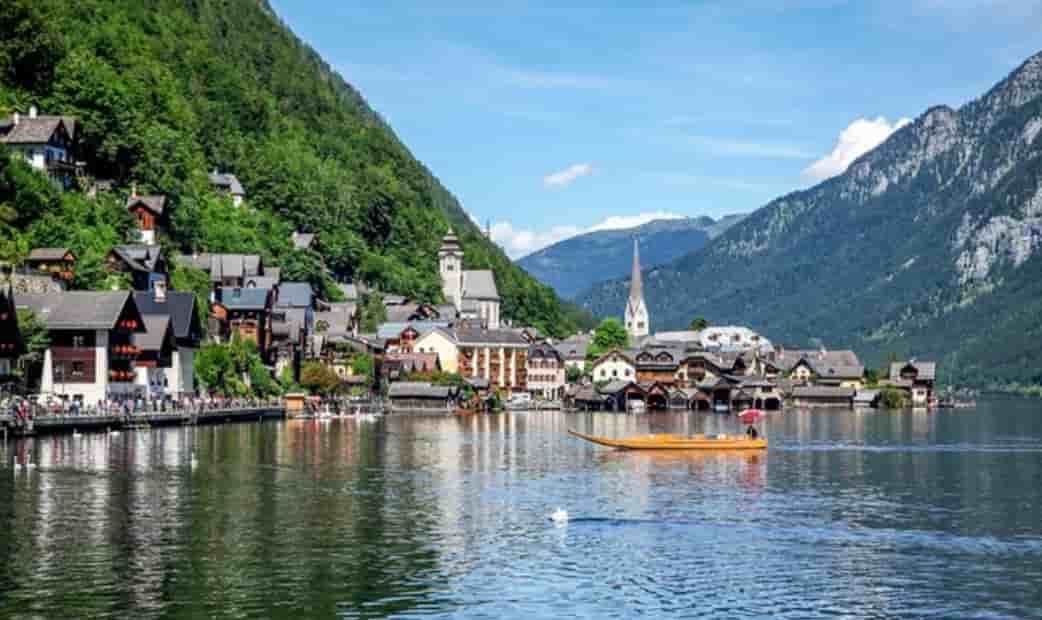
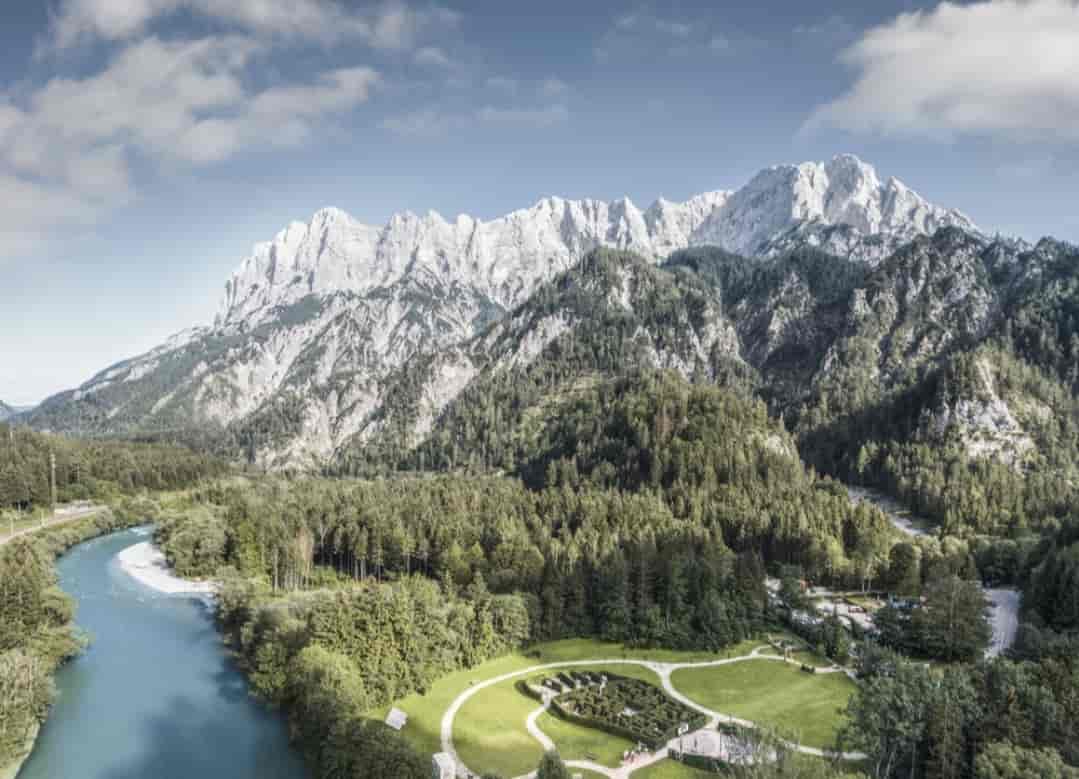
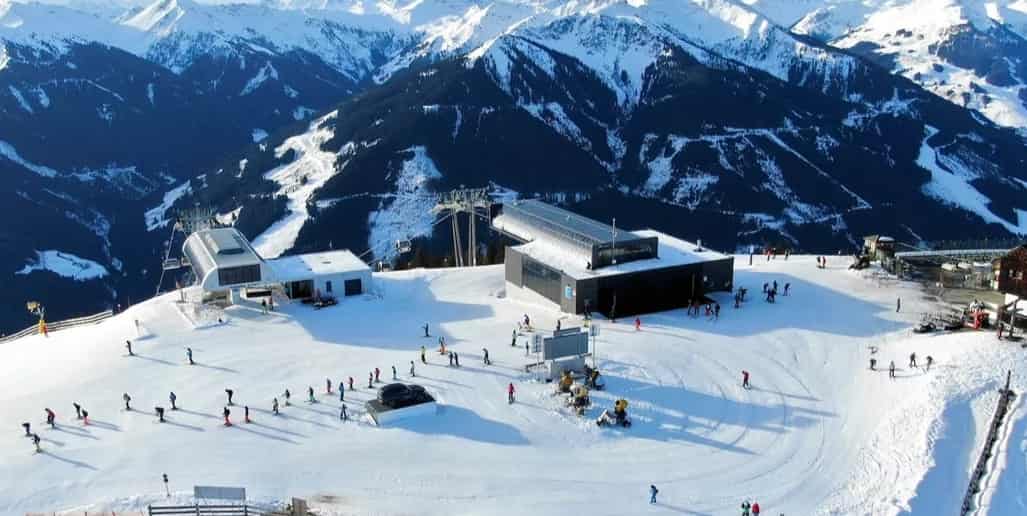
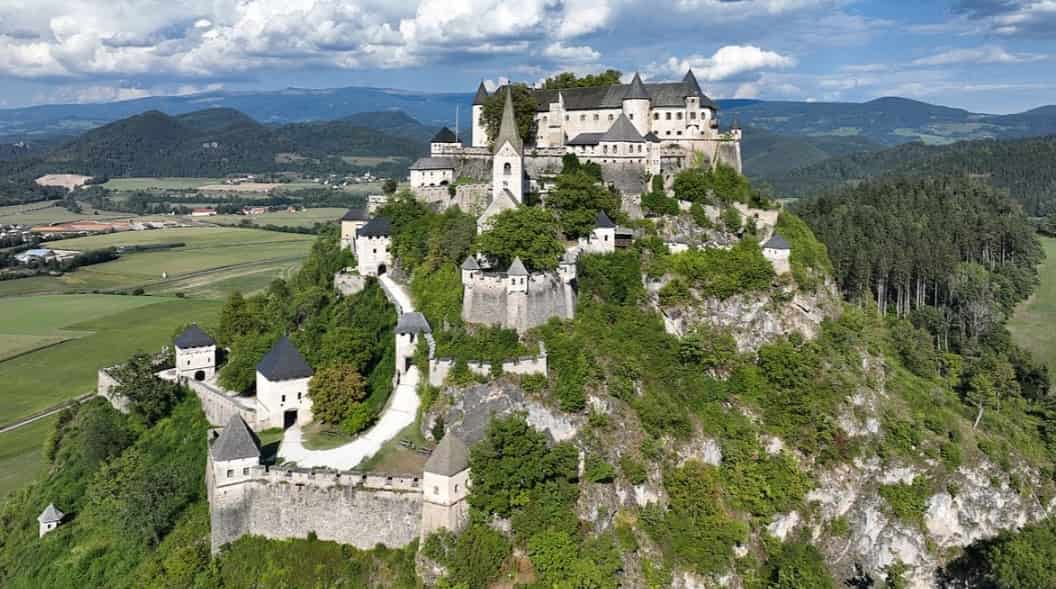
1 thought on “The 10 Most Beautiful Places To Visit In Austria”